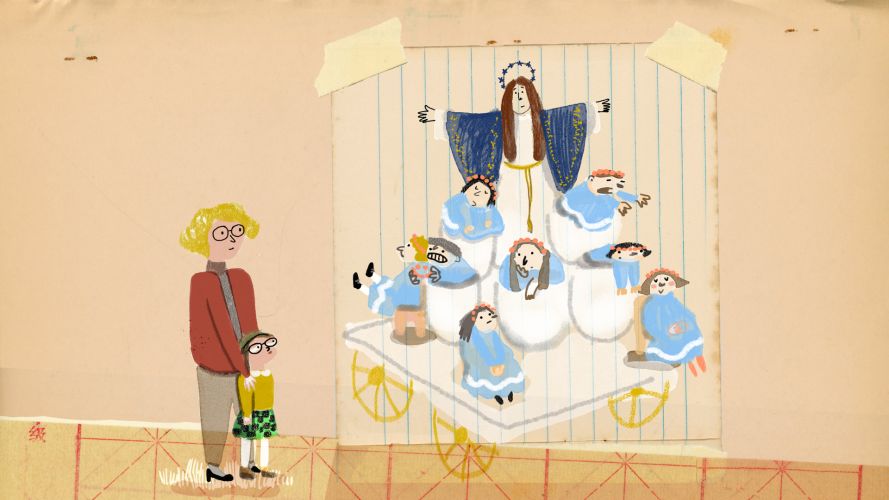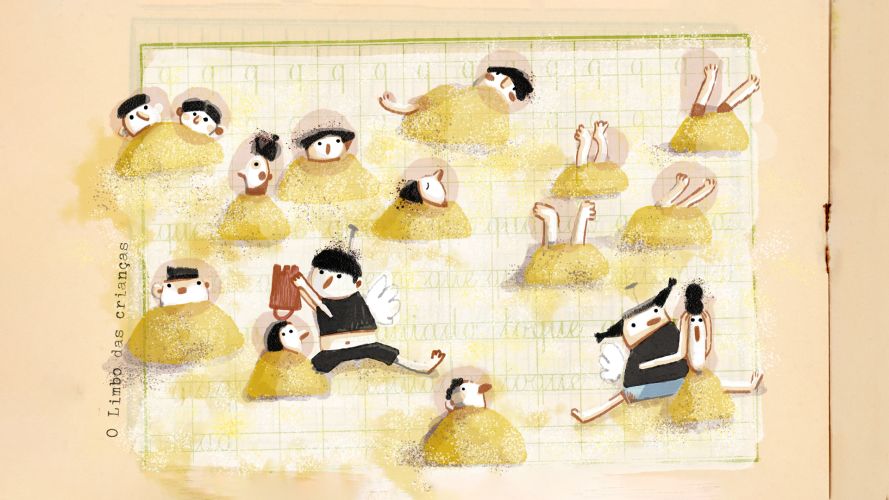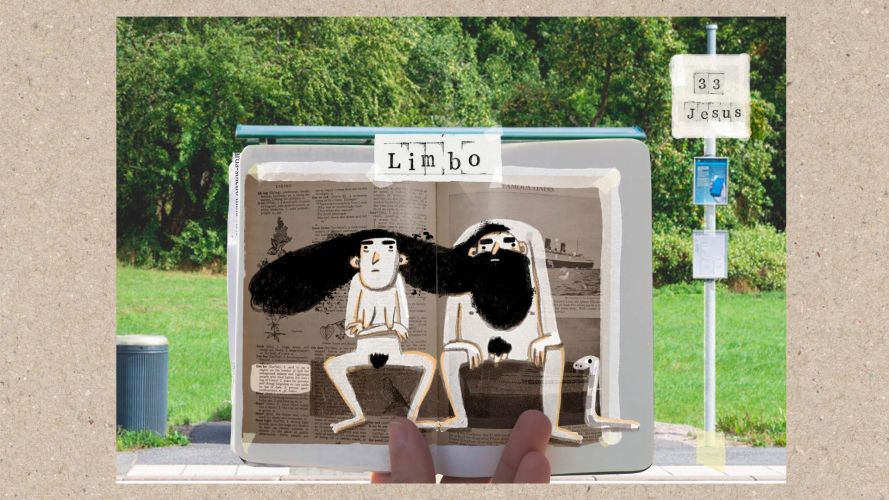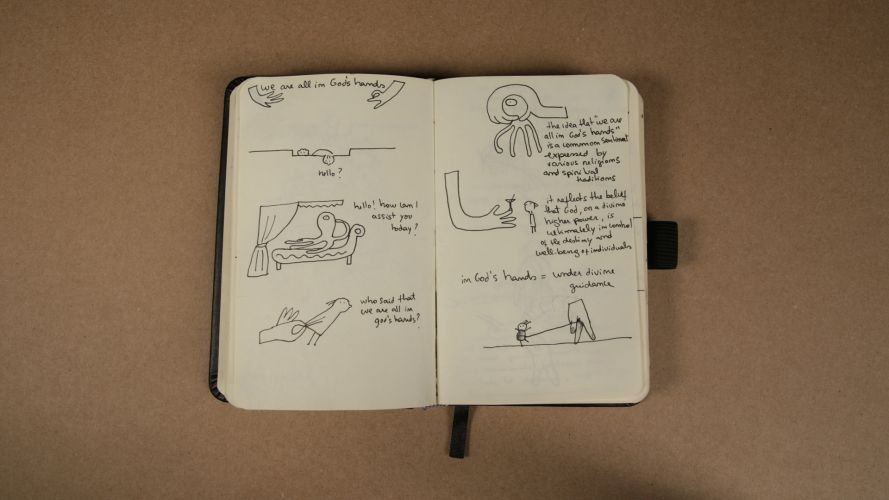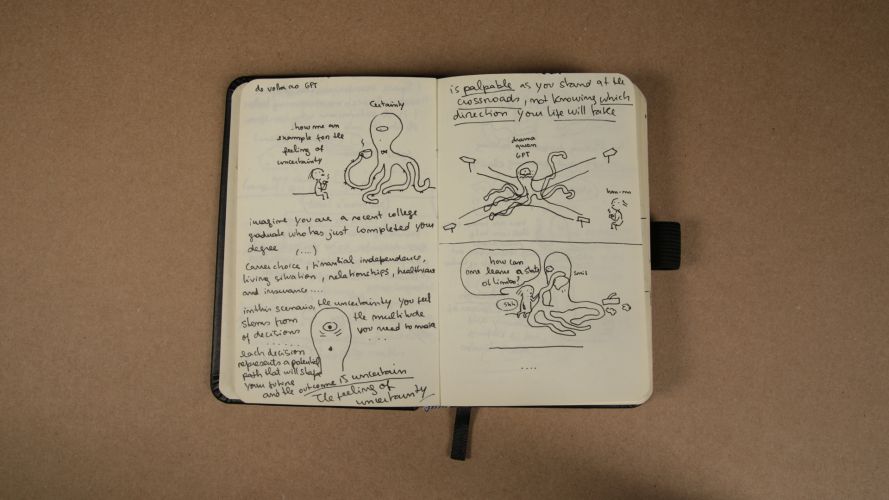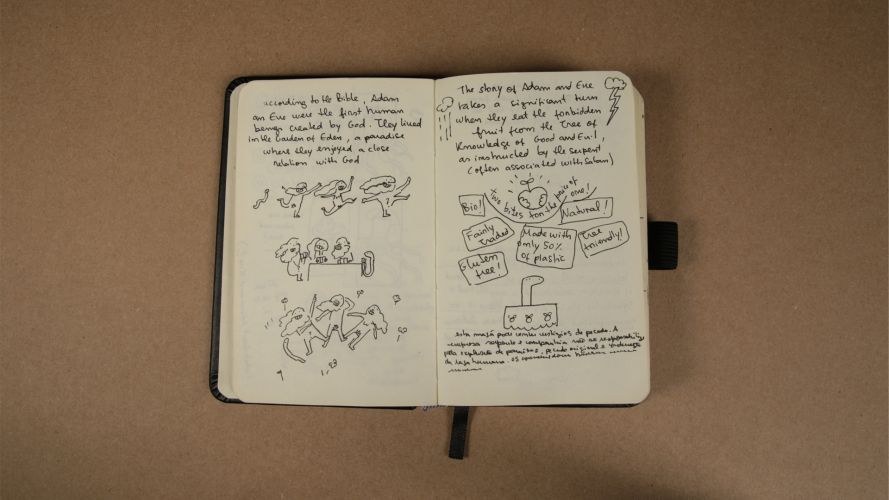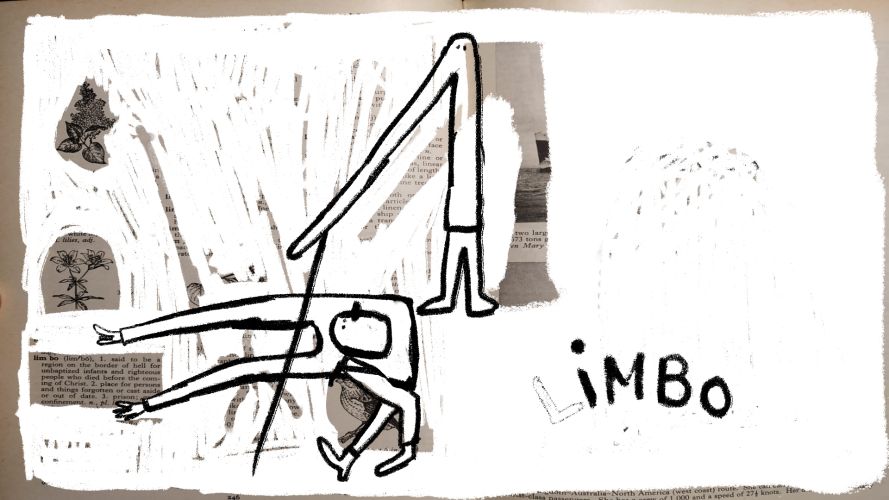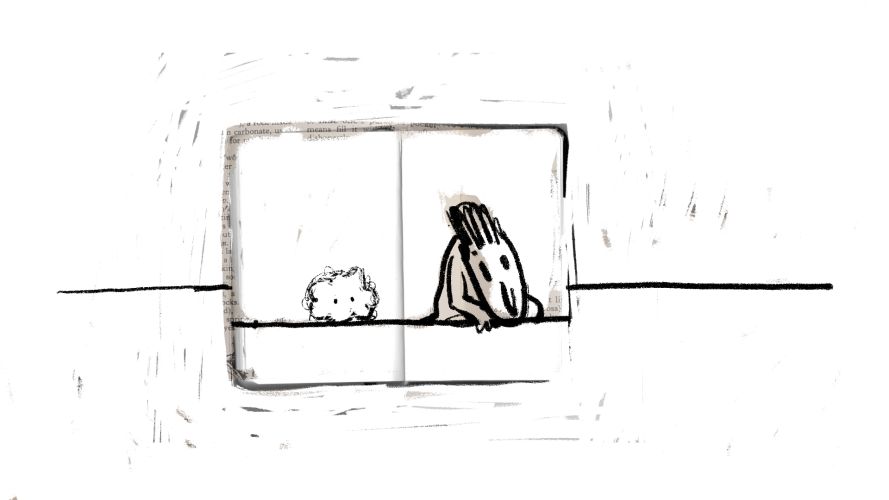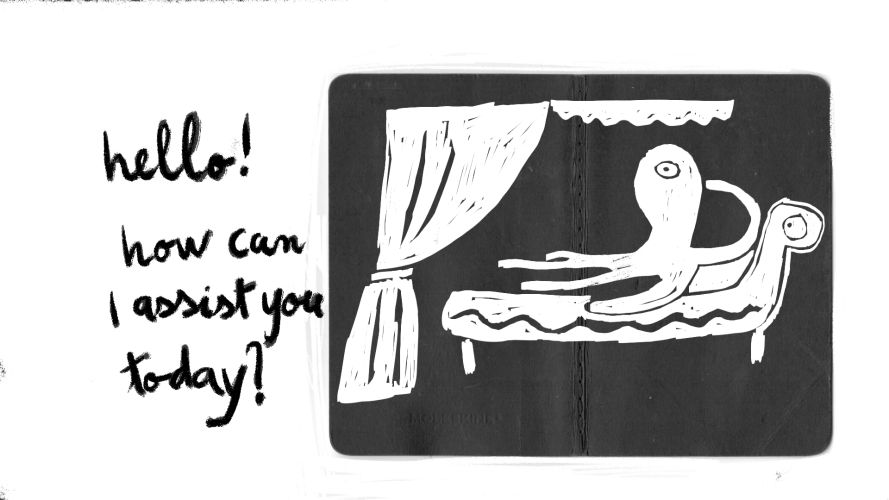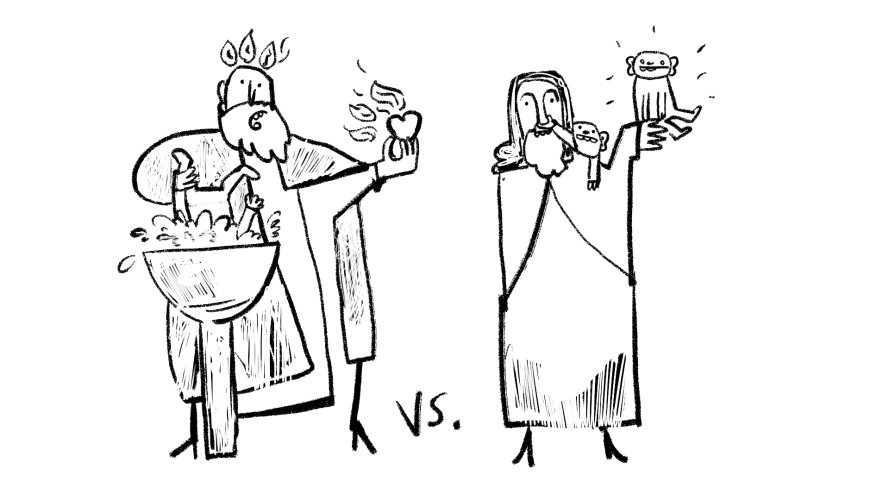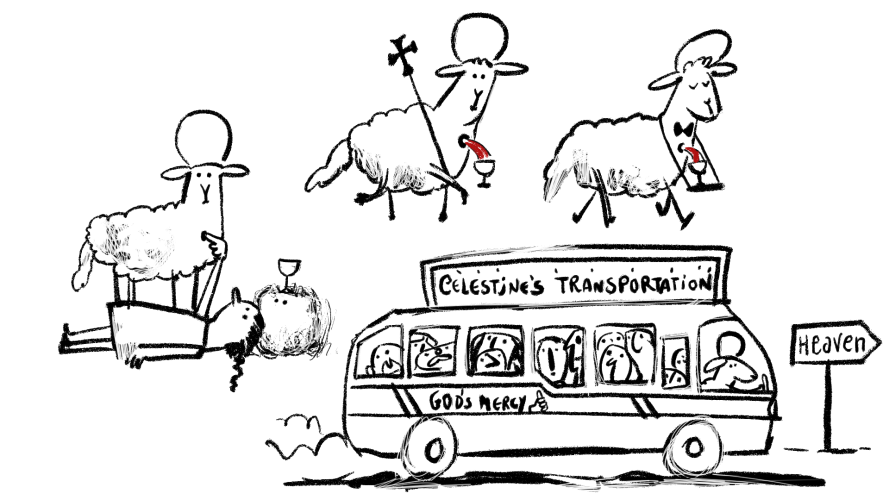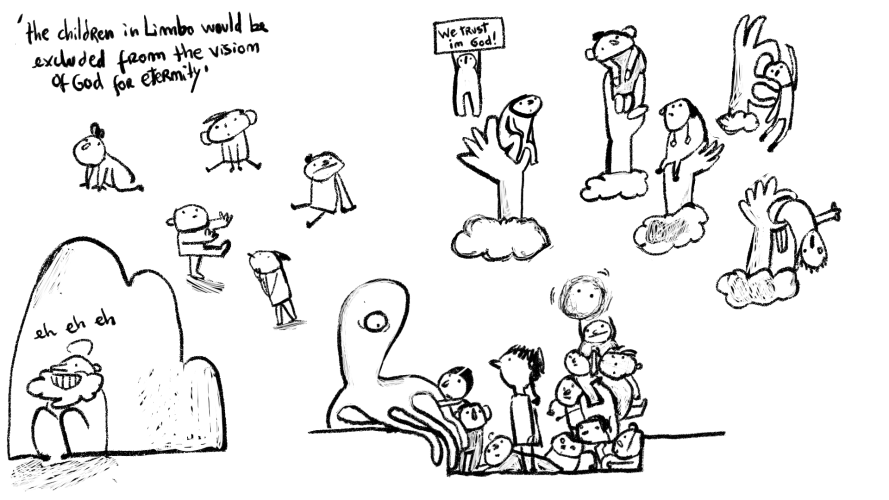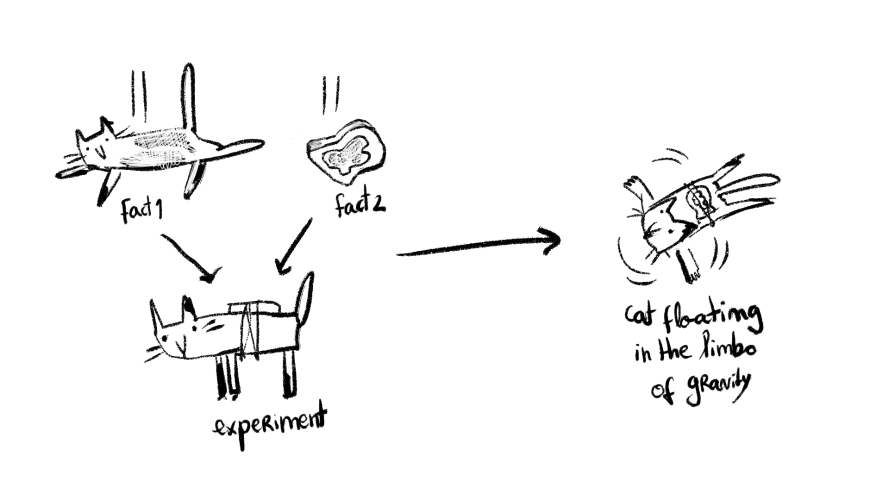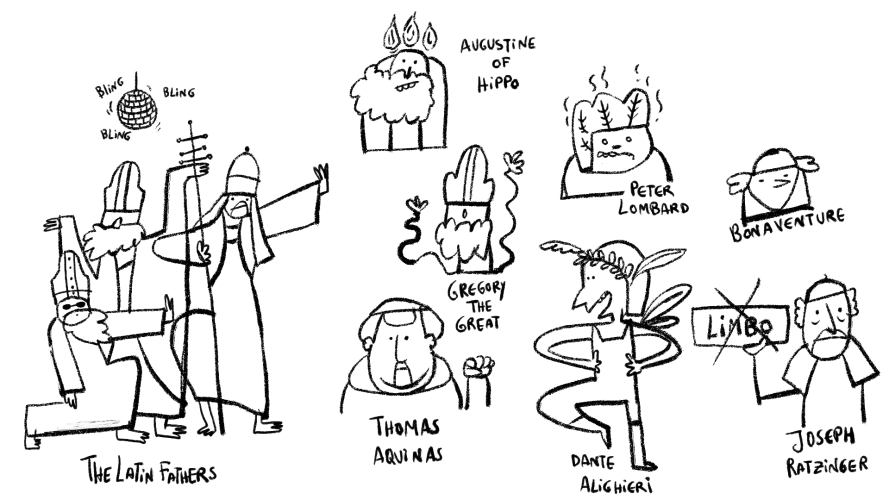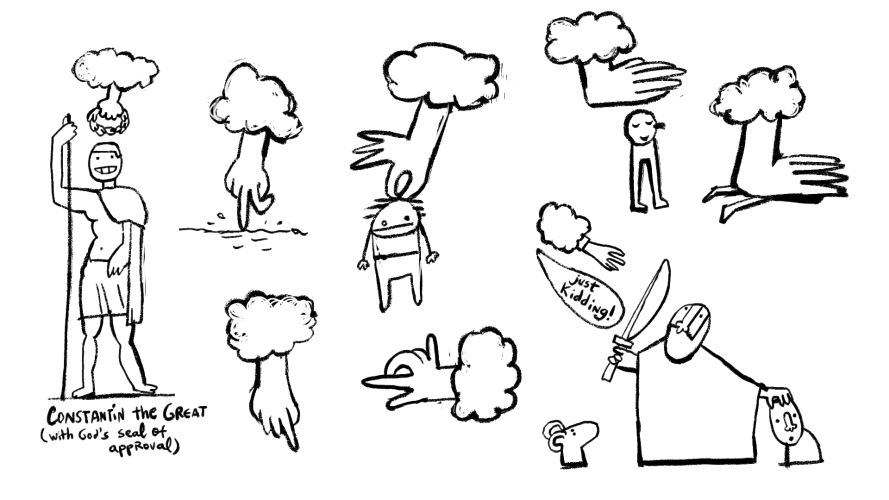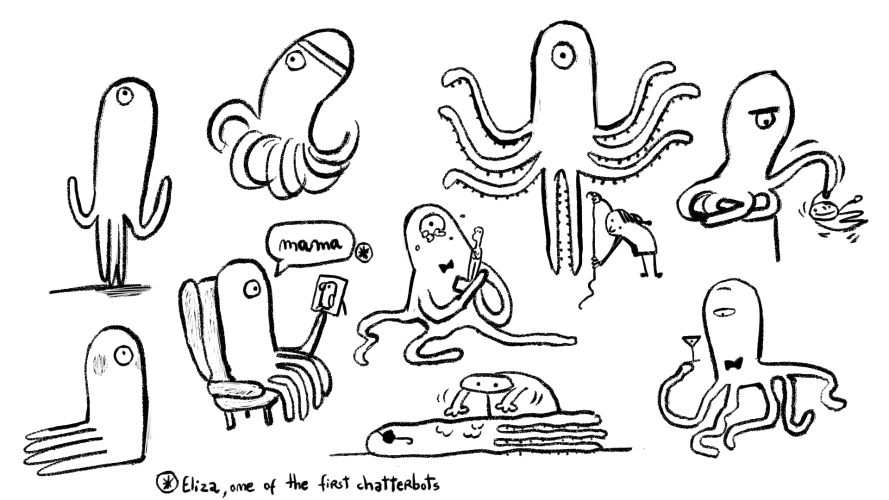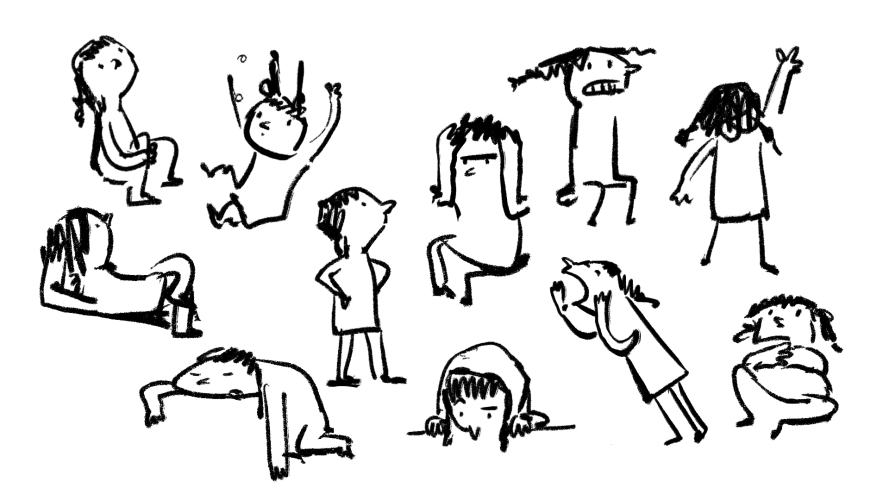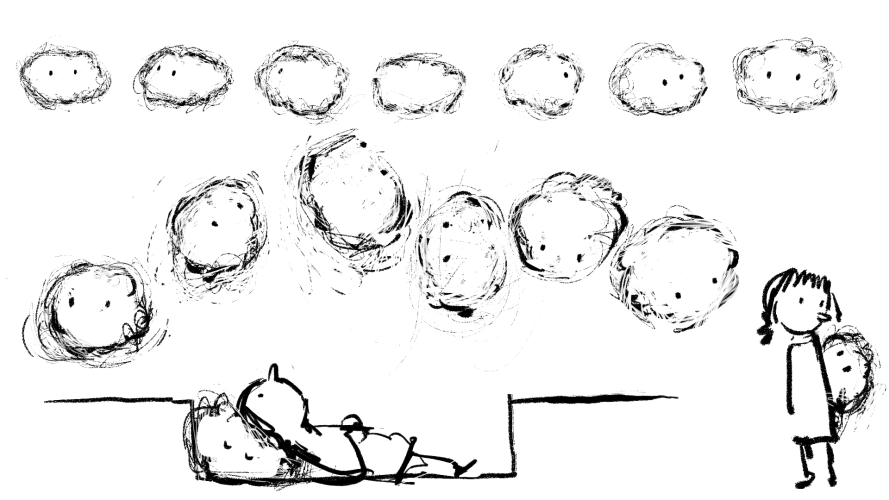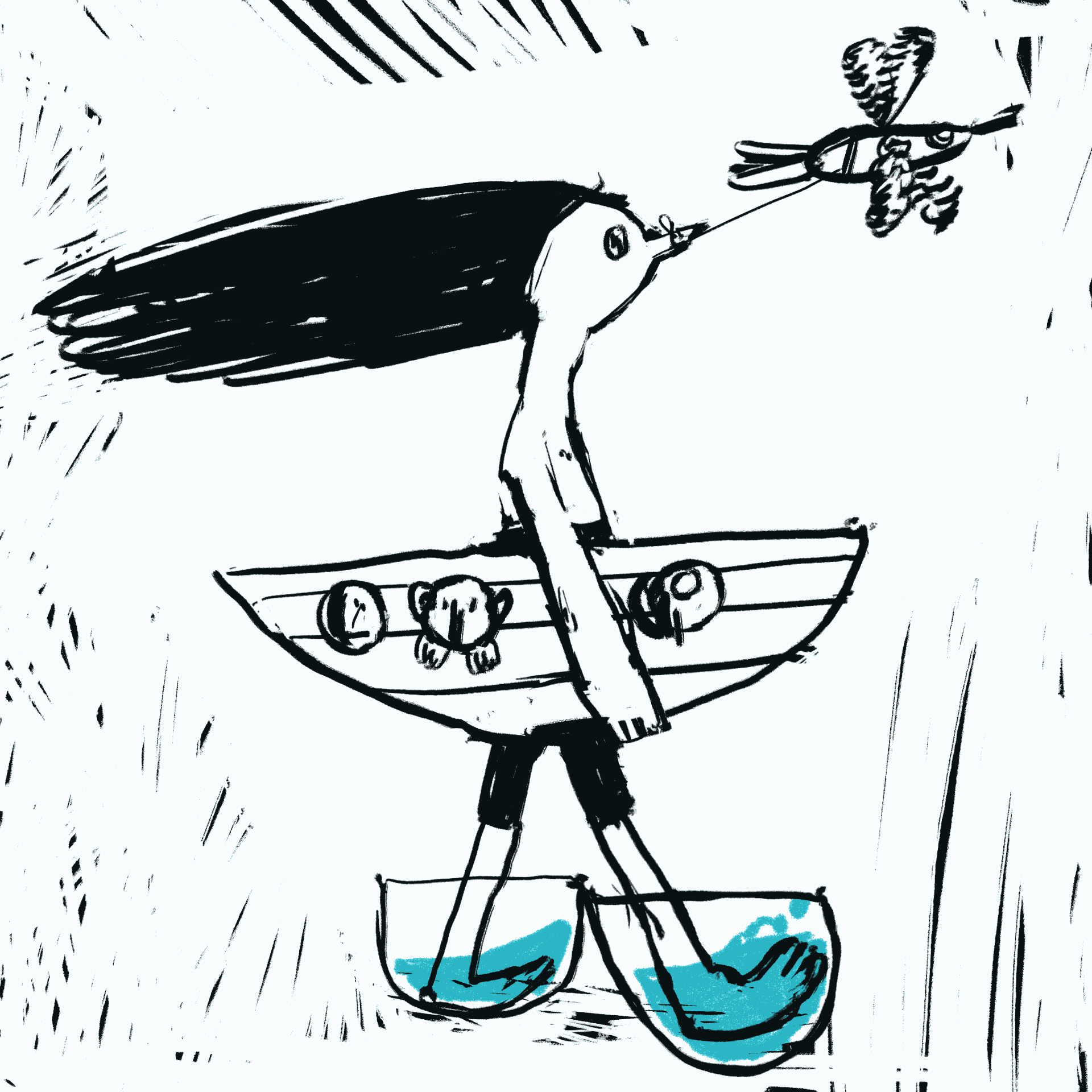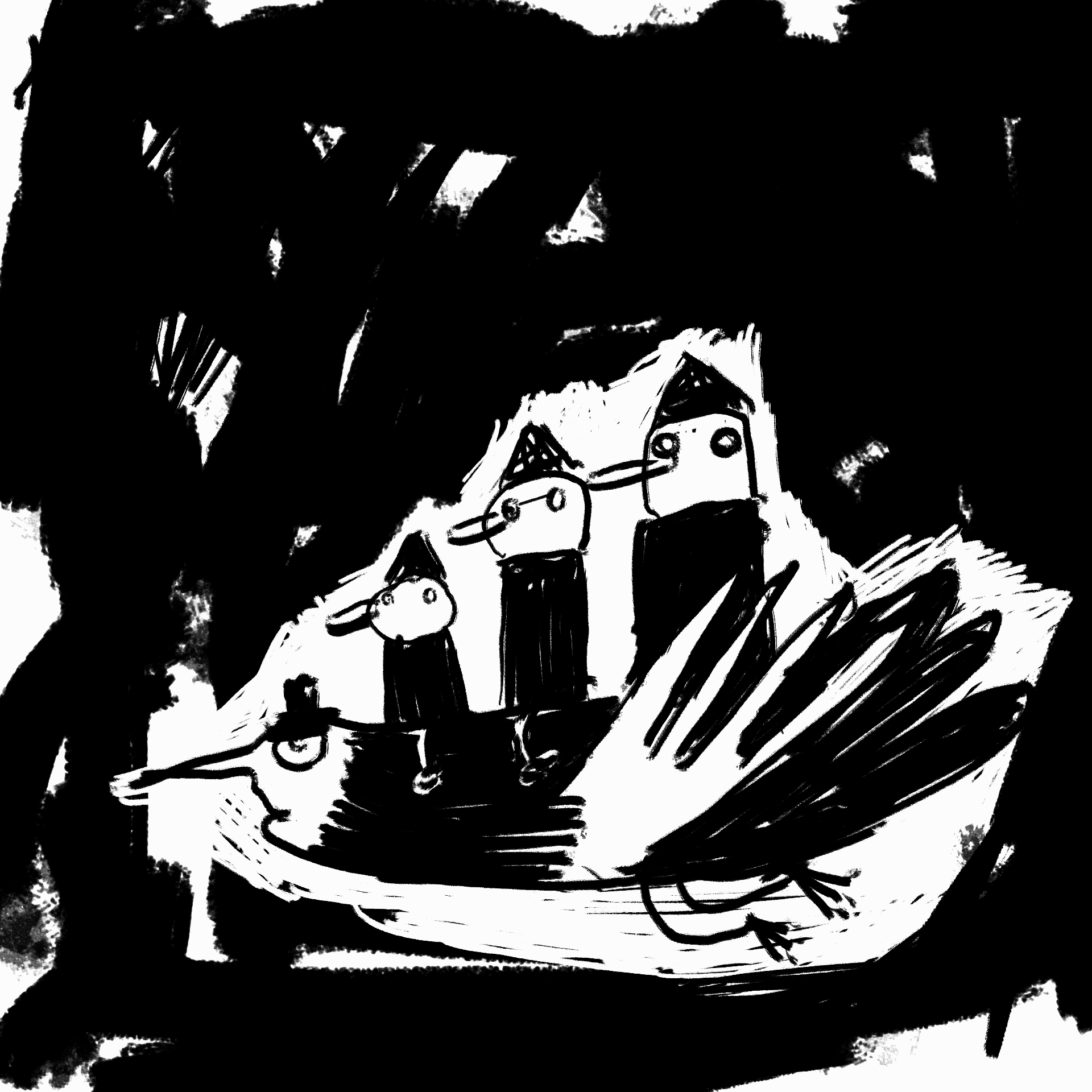10′, 2D animated, paper-cut, photography short film project by Patrícia Figueiredo
A film about Limbo told in the first person. With an introspective and humorous tone, the narrator goes through the Limbo in her sketchbook, looking for its manifestations and for the ones who got stuck in there.
I grew up in a small village of Portugal, where the Catholic Church was present in almost every part of my upbringing.
Somewhere in my childhood, I heard about this place, Limbo. This was the destination for the infants who died without being baptized. They would not go to Hell or Purgatory (since they have not sinned) but also not Heaven, the stain of the original sin would not allow it. They had to go somewhere else.
I used to imagine Limbo as a kind of kindergarten, where kids would stay, probably bored, waiting indefinitely. It was a blurry and undefined space, not bad but also not pleasant.
As an adult, I moved away from religion but the Catholic stories and characters continued to fascinate me. And I felt the need to go back to the Limbo of my childhood, to reflect on the beliefs, the origin of this concept in my life and its long journey as a Catholic dogma.
I dived into an obsessive search, looking for descriptions, representations, the history of this mythical place, and of those who might have gotten stuck in there. So I drew myself inside the sketchbook and found the entrance to Limbo.
In the process, the search for answers became less and less important. But their absence doesn’t make me feel lost or stuck. Or if it does, is in a way where I embrace the humor in the absurd and hopelessness of this place.
Project Concept
– The sketchbook –
The sketchbook gives place to the free association of ideas, it’s an environment for experimentation and erasure, capable of containing all sorts of digressions without losing the thread of the narrative. The sketchbook can as well be seen as a limbo, a transitional space for thought and a space between two worlds: the physical and the one of ideas.
The narrative of the movie doesn’t follow a linear line but unrolls as a stream of thought along the sketchbook.
– Atmosphere –
The pages of the sketchbook are covered with paint, glued papers, traces of erased drawings, graphical noise that comes from the memory of the gesture both of who is animating and of those who are animated.
While the pages are ‘dirty’ with theses graphic elements, the background is almost nonexistent. Limbo is a minimal space, an in between space, suggested by a line. Apparently desolated, it is open to never ending graphic and narrative possibilities.
– Animation –
Likewise the graphic treatment, in the animation the ‘mistake’ is also assumed and encouraged. The distortion of the shapes, the traces left from the eraser, the inconstant line, the not perfect/realistic movement, the shifting proportions are part of the fragility of this undefined space. These graphic choices aim to portrait the uncertain state of being that is the essence of the inhabitants of the Limbo. As an animator, they are also for me a challenging and attractive approach for experimentation.
Several characters emerged naturally in the girl’s (myself) wanderings in Limbo.
She meets an unexpected inhabitant, an Octopus, that is also known as a chatbot. He helps her with finding answers, he’s very polite and eager to help, but she cannot trust him completely. She’s very curious about this character, of how he sees Limbo and himself in it.
In Limbo, she also finds a Fluff of dust, who goes with her everywhere.
She finds Adam, Eve and the Serpent, waiting for a very long time for Jesus to pick them up.
Occasionally, the Hand of God appears, with its uncanny humor.
The Lamb of God is also there, with its blood gushing into a floating golden chalice. When it’s not saving souls, it works as a bartender.
In her digressions, she finds the architects of the Limbo, theologians who used to think a lot about stuff. And she learns about Saint Augustine versus the monk Pelagius, and their thoughts about the original sin.
She finally finds the infants, first excluded from the sight of God and later left to Its mercy, when Limbo was officially closed, in 2007.
And completely unrelated, due to a very bad joke, she finds a cat spinning in a Limbo of gravity.
Co-production Forums & Markets:
06.2024 Brussels Co-Production Market |Brussels International Film Festival [ Belgium ]
06.2024 MIFA Pitches | Festival International du Film d’Animation d’Annecy 2024 [ France ]
04.2024 Projetos Portugueses | Monstra Lisboa International Festival [ Portugal ]
Budget: 164.000,00 €
Secured financing: 24.600,00 € (with the support of the film fund for development by the Portuguese Film and Audiovisual Institute [ICA])

